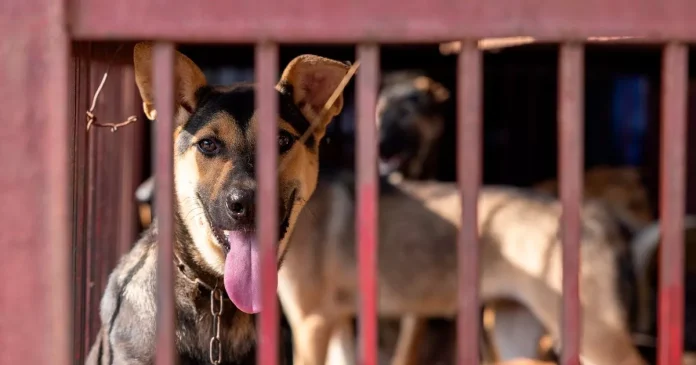A startling new case of zoonosis in the UK has brought pandemic fears roaring back into the forefront as officials mull the possibility of diseases passing between species.
The Mirror revealed this week that the first-ever case of “reverse zoonosis” was reported in a factory-farmed pig, but hidden within the depths of government surveillance documents covering a pig farm in Northern Ireland. The pig had developed a case of human flu, which typically doesn’t cross species barriers, raising significant concerns about zoonotic and reverse zoonotic disease risks, as the affected farm also reported swine flu among its pigs.
Similar human-to-pig transmissions have been documented in the United States, but this critical UK case had not been publicly highlighted until now. Experts have long warned that filthy farms and markets packed full of sick, distressed animals are potential breeding grounds for deadly new viruses that can jump from animals to humans.
Zoonosis is not the name of a specific disease, rather a process during which diseases cross from one species to the next. Crossings are limited to orders, like mammals, and can be major trigger points for pandemics. Coronavirus, for instance, is believed to have originated in bats before spreading to humans around 2020.
The World Health Organisation (WHO) explains there are more than 200 known types of zoonoses, and that they “comprise a large percentage of new and existing diseases in humans”. They don’t always evolve to a pandemic level, and may remain transmissible through blood or saliva but remain much more dangerous.
For instance, rabies, which is 100 percent preventable and virtually 100 percent fatal, is a zoonosis that transmits through bites or fluid contact. The WHO states: “A zoonosis is an infectious disease that has jumped from a non-human animal to humans.
“Zoonotic pathogens may be bacterial, viral or parasitic, or may involve unconventional agents and can spread to humans through direct contact or through food, water or the environment. They represent a major public health problem around the world due to our close relationship with animals in agriculture, as companions and in the natural environment.”
The WHO states that human meat cultivating is also causing antimicrobial resistance, with new diseases – both in humans and otherwise – becoming more difficult to tackle with antibiotics due to their consistent use in animal rearing.
The organisation adds that zoonoses cause “disruptions in the production and trade of animal products for food and other uses”, but they also make them more likely to spread between different animals and humans. Scientists have long noted that the stress of being held captive causes damage to animal immune systems, increasing the already sizeable scale of “virus shedding”.
HEALTH AND WELLBEING WHATSAPP: Be first to get the biggest health warnings and expert advice by joining our Health and Wellbeing WhatsApp group here. We also treat our community members to special offers, promotions, and adverts from us and our partners. If you want to leave our community, you can check out any time you like. If you’re curious, you can read our Privacy Notice.
NEWSLETTER: Or sign up here to the Mirror’s Health newsletter for all the best exclusives and opinions straight to your inbox.
Shedding places both humans and animals at risk of contracting more diseases, and experts have called on the government to bring an end to fur exports in the UK and help shutter the trade for good to “prevent future outbreaks and pandemics”.
At Reach and across our entities we and our partners use information collected through cookies and other identifiers from your device to improve experience on our site, analyse how it is used and to show personalised advertising. You can opt out of the sale or sharing of your data, at any time clicking the “Do Not Sell or Share my Data” button at the bottom of the webpage. Please note that your preferences are browser specific. Use of our website and any of our services represents your acceptance of the use of cookies and consent to the practices described in our Privacy Notice and Cookie Notice.





